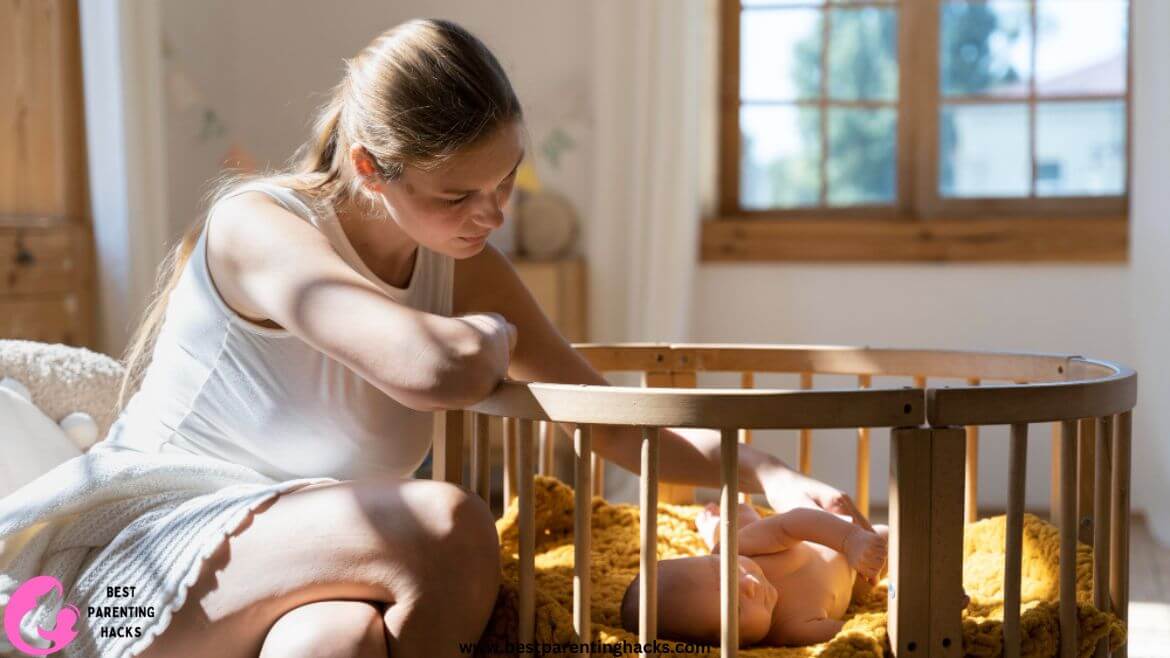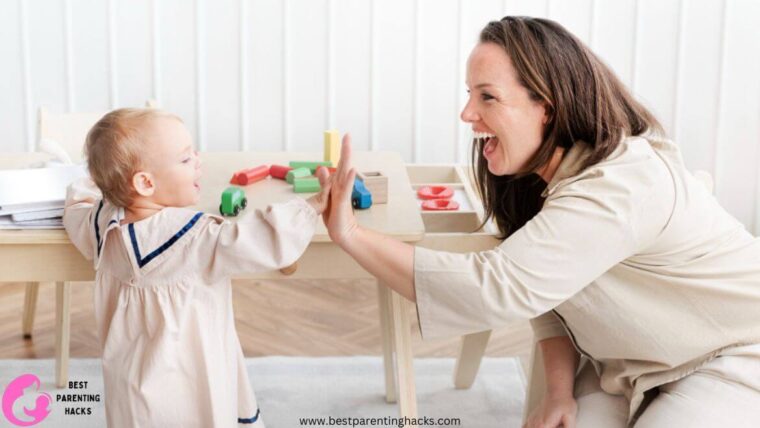Table of Contents
One of the biggest problems you have as a new parent is making sure your kid is comfortable, especially while they are sleeping. For most infants, the bassinet is their first bed, thus it’s important in this regard. It’s a haven where your infant spends countless hours during these early, developing days—not just a place to sleep. Your baby’s growth and your confidence are strongly impacted by the bassinet’s comfort level, which also affects how well they sleep. But it goes beyond comfort and tenderness. As parents, we have a difficult time finding the right balance between convenience and security so that we can protect our children from hazards like SIDS and encourage good sleeping habits.
To address the title question, “How to make the bassinet more comfortable for a baby?”, a multimodal strategy is required. It entails being aware of and following safety regulations, selecting appropriate materials, and utilizing cutting-edge methods to improve comfort without sacrificing security. The idea is to create a calm, cozy, and safe space that resembles the comfort and safety of a mother’s hug. You’ll have a thorough grasp of how to strike this balance by the conclusion of the essay, guaranteeing that your child’s bassinet is a secure refuge for the duration of their life in addition to being comfortable.
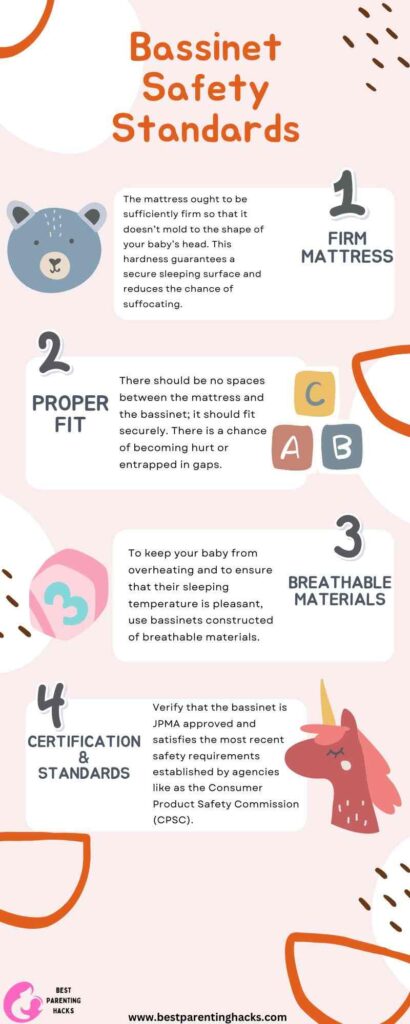
Babies in bassinets should always be kept safe. Knowing and following bassinet safety regulations is the first step to creating a cozy but secure resting space. For the safest sleeping environment for newborns, the American Academy of Pediatrics (AAP) suggests a firm mattress in a bassinet that has received safety approval. This firmness is essential to reduce the possibility of SIDS and to give your baby’s growing body and spine the support they need. Babies are very perceptive to their environment, thus the materials chosen in the cradle should also be non-toxic and devoid of hazardous substances.
1. Firm Mattress: The mattress ought to be sufficiently firm so that it doesn’t mold to the shape of your baby’s head. This hardness guarantees a secure sleeping surface and reduces the chance of suffocating.
2. Proper Fit: There should be no spaces between the mattress and the bassinet; it should fit securely. There is a chance of becoming hurt or entrapped in gaps.
3. Breathable Materials: To keep your baby from overheating and to ensure that their sleeping temperature is pleasant, use bassinets constructed of breathable materials.
4. Certification and Standards: Verify that the bassinet is JPMA approved and satisfies the most recent safety requirements established by agencies like as the Consumer Product Safety Commission (CPSC).
You Might Also Like to Read: I Accidentally Got Saline Drops in My Baby’s Eye
Enhancing Bassinet Comfort While Maintaining Safety
A comfortable bassinet that prioritizes safety requires consideration of the following:
1. Selecting the Right Mattress and Sheets: Select a flat, firm mattress and cover it with a sheet that is fitted and made just for the bassinet. To guarantee comfort and avoid overheating, the sheet must be composed of a supple, breathable material like cotton.
2. Maintaining Optimal Temperature: The ideal ambient temperature for the bassinet is between 68 and 72°F (20 and 22°C), or suitable for an adult wearing light clothing. Avert overcooling or overheating the space.
3. Reducing Noise and Light: A peaceful setting may greatly enhance the quality of your sleep. To create a calm environment, think about utilizing white noise machines and blackout drapes.
4. Safe Positioning: For the first six months, keep the bassinet in the bedroom, close to your bed. This proximity facilitates effortless supervision and offers your infant solace through your physical presence.
5. Avoiding Overcrowding: Remove any cushions, stuffed animals, and loose linen from the bassinet. These products raise the possibility of overheating and asphyxia.
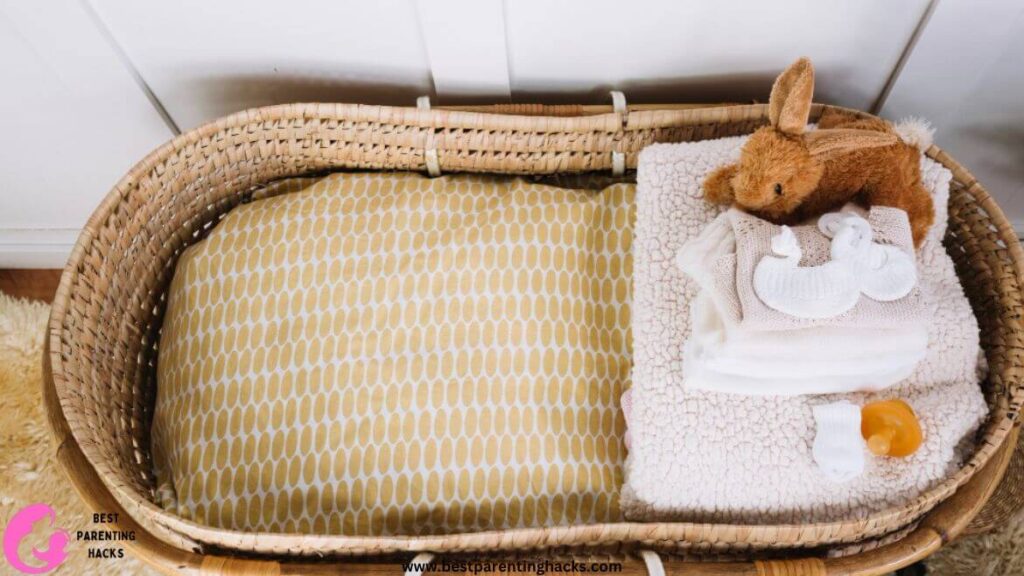
Innovative Comfort Techniques for Bassinets
Apart from the conventional comfort measures, there exist inventive methods to augment your baby’s experience in the bassinet:
1. Swaddling: When done correctly, swaddling your infant may make them feel warm and secure. Make sure the swaddle fits snugly without restricting hip mobility.
2. Soothing Sounds: Lullabies or other gentle, rhythmic noises help soothe your infant and enhance the quality of their sleep. Think of a sound machine that plays natural noises or a baby mobile that plays soft music.
3. Gentle Motion: Some bassinets include a mechanism that allows them to rock or vibrate. These soft movements can help children fall asleep by simulating the movement they experienced in the womb.
4. Aromatherapy: You may create a calming atmosphere by using baby-safe essential oil blends in a diffuser, such as lavender. However, before adding any new odors, always get advice from a physician.
5. Lighting: Your baby might feel more at ease during night meals and diaper changes when there is soft, adjustable lighting that helps them distinguish between day and night.
Personalizing Your Baby’s Bassinet
Several easy yet useful actions are involved in customizing your baby’s bassinet:
1. Choosing the Right Bedding: Make sure the bedding you choose is breathable, hypoallergenic, and soft on your baby’s skin. Make sure the bedding encircles the mattress tightly and firmly.
2. Adding a Personal Touch: Include things that serve as a constant reminder of your presence for your infant, such as spending one night with the bassinet sheet in the bassinet before putting it in there to retain your aroma.
3. Visual Stimulation: Above the bassinet, hang a mobile with vibrant colors and designs. This helps with your baby’s visual development in addition to providing entertainment.
4. Temperature Control: To keep the baby’s resting space at a steady, comfortable temperature, use a room thermometer.
You Might Also Like to Read: When To Buy Maternity Clothes?
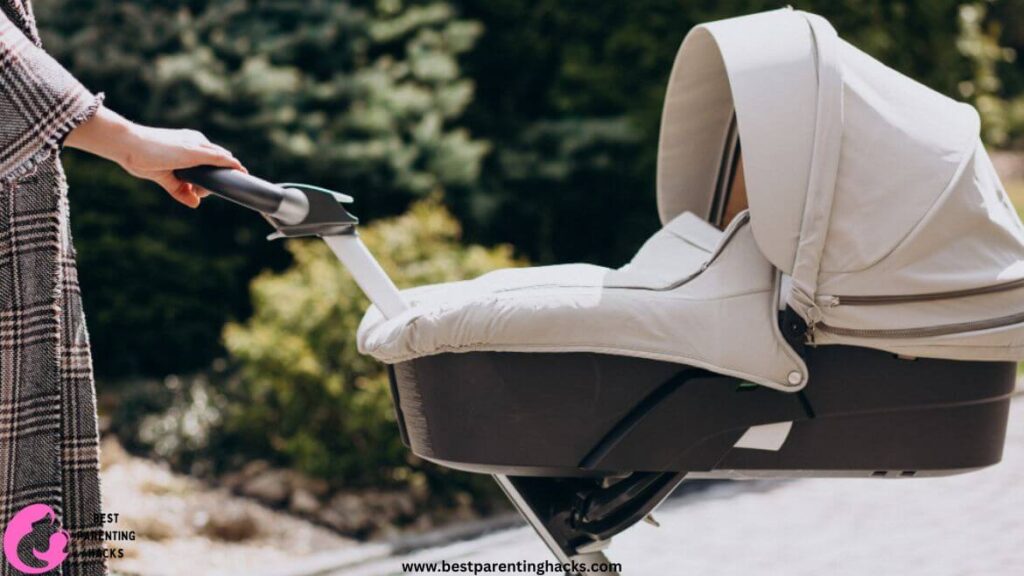
Common Mistakes to Avoid
Parents should steer clear of the following frequent errors while attempting to get a bassinet comfortable:
• Overstuffing the Bassinet: Stuffing the bassinet with blankets, cushions, or soft toys increases the risk of asphyxia. Keep everything tidy in the bassinet.
• Using Improper Bedding: Steer clear of adult or improvised bedding. Use bedding made especially for the model of bassinet you own.
• Ignoring Manufacturer’s Instructions: Always assemble and use products according to the manufacturer’s instructions. By doing this, the bassinet is utilized appropriately and safely.
• Neglecting Regular Cleaning: To keep a clean sleeping environment, clean the bassinet and all of its parts regularly according to the manufacturer’s recommendations.
• Overlooking Recalls and Safety Notices: To guarantee continued safety, keep up with any recalls or safety notifications about your bassinet model.
Expert Opinions and Parental Advice
It might be helpful to get advice for building a secure and cozy bassinet from specialists and seasoned parents.
1. Follow Safe Sleep guidelines: Medical professionals stress the significance of adhering to safe sleep recommendations, which include avoiding soft bedding and putting newborns to sleep on their backs.
2. Monitor Sleep Patterns: You may learn a lot about your baby’s comfort level and make the required modifications by keeping an eye on their sleep patterns.
3. Stay Informed: Stay current on the most recent findings and suggestions about the safety and comfort of newborn sleep.
4. Trust Your Instincts: If you’re a parent, go with your gut. If something about your baby’s sleeping environment seems off, it’s worth looking into more.
5. Seek Support: If you are worried about your baby’s safety or comfort during sleep, don’t be afraid to ask other parents or medical experts for help.
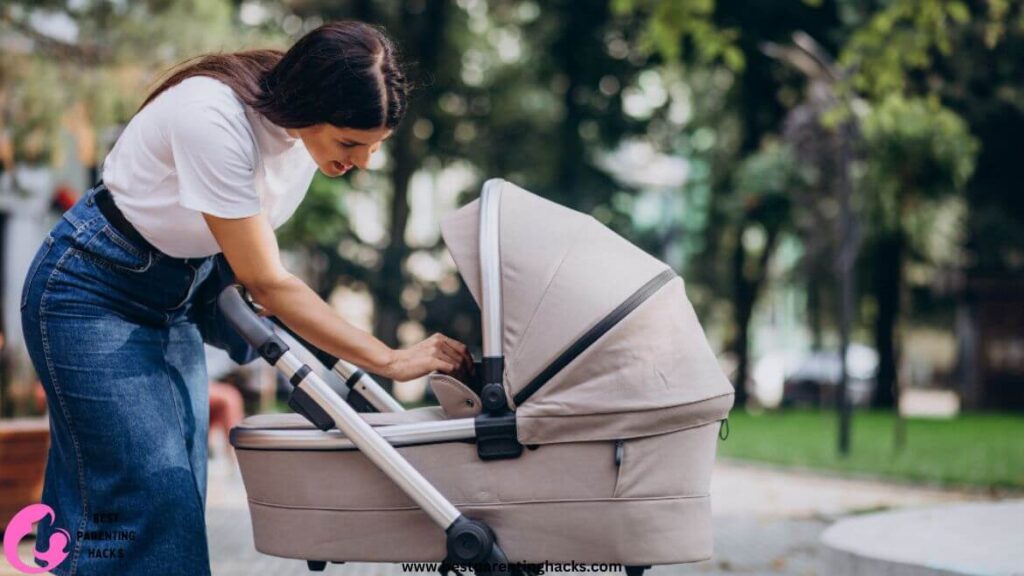
Conclusion
In summary, making a safe and pleasant bassinet for your child requires a combination of adhering to safety regulations, recognizing your child’s requirements, and using creative methods to increase comfort. Recall that the objective is to create a safe, comforting atmosphere that encourages sound sleep habits and enhances your infant’s general well-being. Your baby’s bassinet may be a comfortable and loving location for growth and development, as well as a place to rest if you steer clear of typical blunders and consult with professionals and other parents. Enjoy these times of planning and excitement as you set out on your adventure, understanding that you are giving your child a secure and caring home.
FAQs
1. Can I put a softer mattress in the bassinet for my infant? No, for safety reasons, an extra-firm mattress is advised.
2. In the absence of blankets, how can I keep my infant warm in the bassinet? Put on suitable clothes, such as a swaddle or sleep sack.
3. Are toys okay to have in the bassinet? To reduce the danger of suffocation, it is advisable to keep toys out of the bassinet.
4. Are used bassinets OK to use? Used bassinets should be handled with caution. Make sure they adhere to the most recent safety regulations.
5. How can I tell whether the infant in the bassinet is too hot or too cold? Look for perspiration or if your baby feels chilly on their back or neck.
6. How should a bassinet be cleaned? Use baby-safe, mild cleansers, and make sure everything dries completely.
7. How near my bed should the bassinet be placed? It is easy to watch and reassure a child when the bassinet is kept within easy reach.

